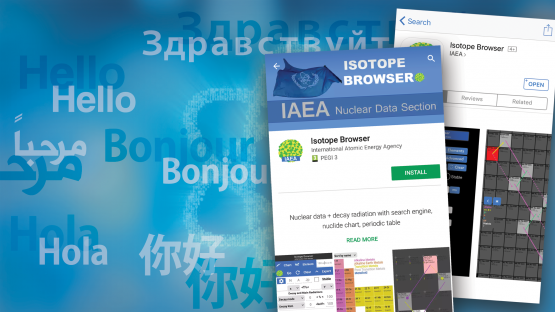Scientists and professionals in nuclear-related areas from all over the world can now use the IAEA Isotope Browser mobile application in all six official United Nations languages as well as in Italian, Japanese, Slovenian and traditional Chinese.
“While English may be one of the most widely spoken languages in the world and the main language in the field of nuclear physics, not everybody has the luxury of learning foreign languages,” said Arjan Koning, Head of Nuclear Data Section at the IAEA. “By making this app available in many languages we want to encourage people from different backgrounds, from professionals to students to laymen, to access nuclear data and information.”
The app provides the properties of more than 4 000 nuclides and isomers and, among other things, allows users to search by sorting a nuclide’s decay type, radiation and half-life. It is available for iOs and Android devices.
Nuclear data has a broader audience than one might expect, and is increasingly used in many fields of science, technology, and engineering, Koning said. So far 55 000 users have downloaded the app and he expects that, thanks to the new language versions, the 100 000 downloads mark will be reached within a few years. Scientists who use the app have volunteered to translate it to the various languages.
The app’s database is updated twice a year and is stored locally on the device, whether it is a smartphone or a tablet, to allow access to the data offline — an essential feature for users working in environments without an internet connection or those in developing countries where internet access can be limited.
“We keep receiving requests for other languages, for example German or Portuguese, from our users,” said Marco Verpelli, nuclear data analyst and programmer working on the development of the app. “This indicates how useful and unique services like the Isotope Browser App and its language versions are.”



